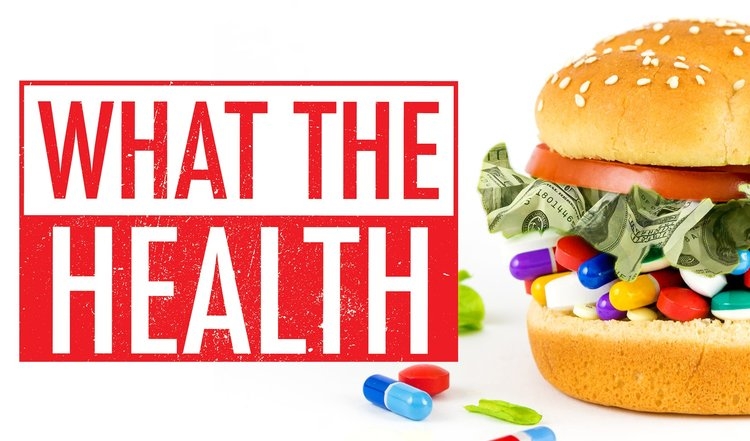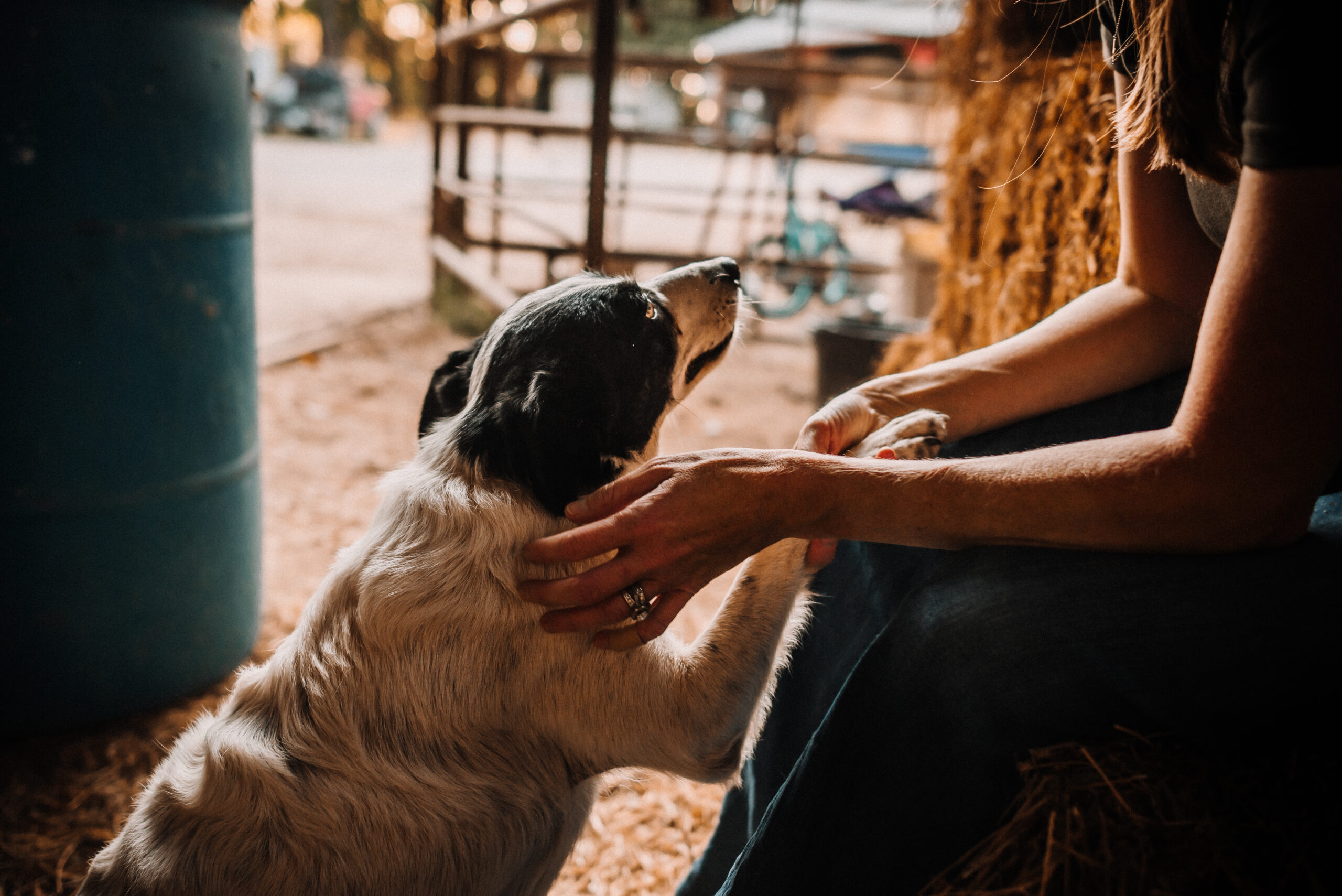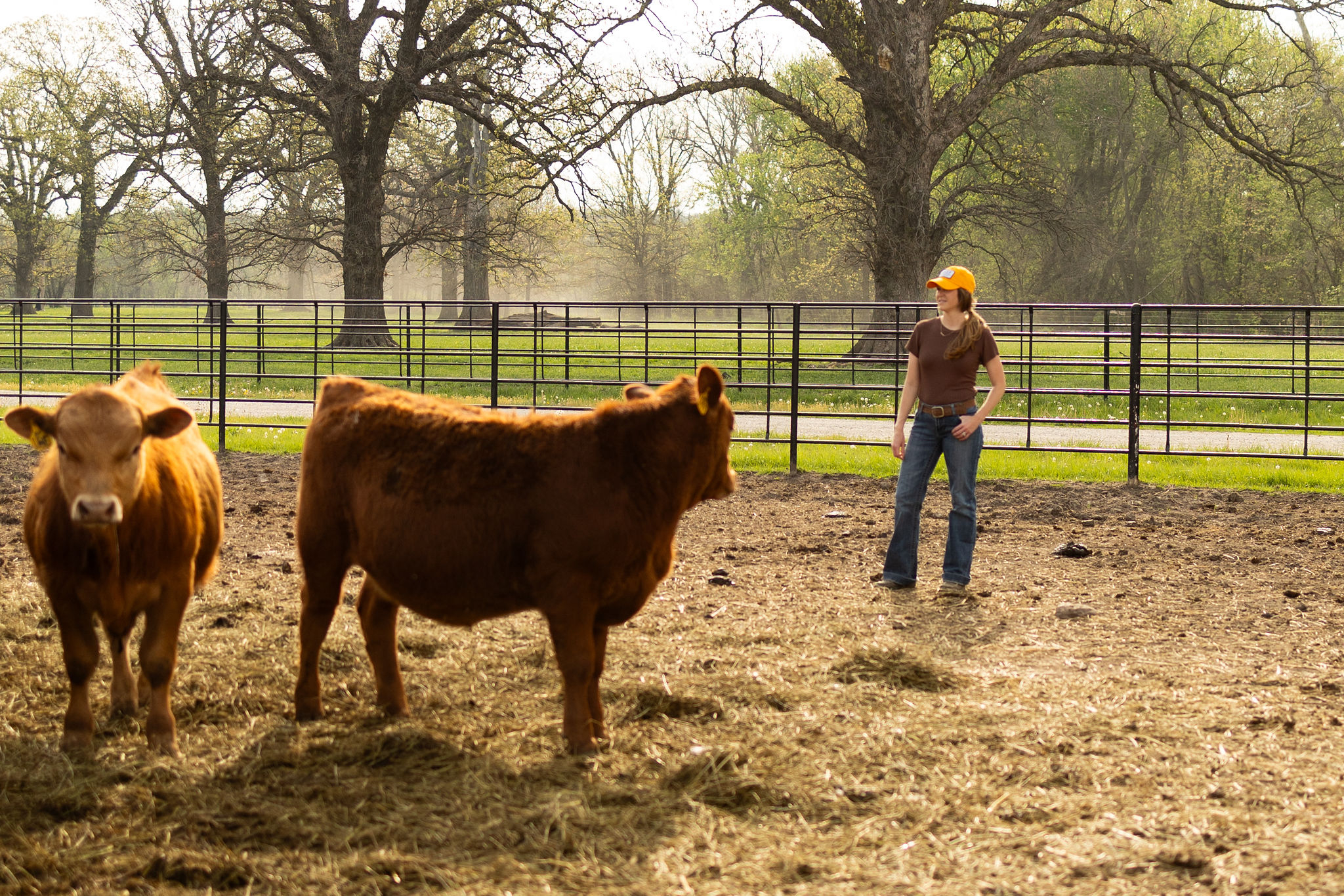By now, you’ve probably heard of the vegan documentary “What the Health” on Netflix. It’s been reviewed, analyzed and, weirdly, praised for the past several weeks by folks of all walks of life.
It’s scary right? Stop eating meat, adopt a vegan lifestyle and you’ll eliminate your risks of cancer, diabetes and heart disease, according to the filmmakers. I mean, I don’t know anyone who unabashedly eats more meat than I do (#meatatarian) and even I found myself clutching my pearls.
Well, mass hysteria and fear are the result when filmmakers cherry pick data and only interview doctors who share their same opinion. We have a word for that in the scientific arena = BIAS. To help clear up A LOT of misconceptions and ease your fears, I’m addressing the multiple shameful lies from “What the Health” from a rancher and consumer’s point of view. If you are looking for reviews from dietitians, nutrition professionals and doctors, look no further.
POLLUTION & GHG
The filmmakers point their fingers to animal agriculture as a major contributor of GHG. They cite a source that alleges animal agriculture creates more GHG than the entire transportation sector however, they failed to use unbiased or even relatively recent sources. The Environmental Protection Agency, in 2015, stated after much investigation that agriculture accounts for only 9% of GHG in the U.S. Livestock, including cattle, hogs, sheep and chickens, accounts for only about 3% of those emissions. That’s a huge difference between the “What the Health” figure and the actual, real data. Here’s a graphic representation and link for you to fact check my figures.
IRRESPONSIBLE ANTIBIOTIC USE
Unlike the filmmakers, I’m out here in the sticks and mud caring for animals on a daily basis, doing my absolute best to make sure they don’t get sick, have plenty of good quality feed and are free from stress and predators. But ya know what? Despite our best intentions, sometimes animals get sick – just like people. And when that happens, the humane thing to do is give the animal an antibiotic. [bctt tweet=”As a rancher, I take the responsibility of caring for our cattle very seriously” username=”brandibuzzard”] which is why I strive to improve our practices to provide a safe environment for our animals so that antibiotic use is kept at a minimum. When an animal is sick, we work with our veterinarian to ensure that the appropriate antibiotic is used responsibly and correctly.
On top of the responsible use piece are the safeguards in place by the USDA, Food Safety & Inspection Service and the Food & Drug Administration. Each antibiotic has a specific withdrawal time that must be observed before that animal can be slaughtered. If an animal has measurable residues in its meat, the carcass is pulled and the producer is in deep caca. It’s not a laughing matter and food safety is taken very seriously. I feed my family the same beef that I sell to grocery stores, so I wouldn’t do anything that I thought would be harmful. That’s wrong on multiple levels.
Another antibiotics misnomer I’d like to address is this hefty 80% number floating around. You know, the one that says that 80% of antibiotics sold in the U.S. are sold to livestock producers. That may seem like a red flag but if you really think critically about it, that makes sense. Cattle and pigs are much larger than people. When I get sick the doctor prescribes me a course of antibiotics appropriate for my body size (which is ~113 lbs, give or take). A 1,200 pound cow is going to need a lot more medicine to clear up a respiratory infection than a woman a tenth that size. That’s just simple math, not a conspiracy theory.
HORMONES….THEY’RE EVERYWHERE AND IT’S HORRIFYING!
Yes, it’s true. Hormones are used in beef production. And I’ll be more than happy to explain why in just a moment but there is something you absolutely need to know before we go on:
It is ILLEGAL to administer growth hormones to poultry or pigs in the U.S.
What that means, is every single piece of fried chicken, every single pork chop on a stick and every single Thanksgiving turkey is 200% added-hormone free. Why do I say ‘added hormone?” Because every single food on planet Earth contains naturally occurring hormones. Lettuce, eggs, cabbage, apples, peanuts butter, chicken – every food has hormones.

One small pellet is inserted in the back of the ear and it makes a world’s difference!
Ok, now back to beef. Farmers and ranchers who raise cattle, like myself, use growth implants to make our cattle more efficient. These itsy bitsy growth implants contain hormones (mostly estrogen) that give the animal a boost, of sorts. The implant, which is smaller than a Tic-Tac, helps the animal turn fat into more lean muscle while using less feed to do so. Less feed means less water and land use, which ultimately makes our ranch more sustainable. Like I’ve said before, cattle are great environmentalists.
If you’re still worried, take comfort in the testing and approval process for growth implants that has been in place by the FDA and USDA for more than 50 years. Furthermore, beef from an animal given a growth implant contains only 1.9 nanograms of estrogen, while beef from an unimplanted animal contains 1.3 nanograms of estrogen. If you take into account that a nanogram is .0000000000352 of an ounce, you can see that the difference microscopic.
Compare the 1.9 nanograms in implanted beef to the 225 nanograms in potatoes or 340 nanograms in peas and you can begin to see why this should be a ‘no biggie’ issue. But if you’re still a bit shaky, you can easily purchase “added hormone-free” beef at the grocery store. Just don’t denigrate those of us who do choose to use this extremely valuable technology, ok? Thanks!
COAGULATED COW PUS
I can’t even begin to wonder how scientists and doctors can believe this is actually true. Wouldn’t you want to talk directly to a dairy farmer to find out the truth about your milk? I mean, who knows more about dairy cow health, welfare and nutrition than the people who devote their entire lives to that cause?
Good thing I’ve got a good friend, who is a dairy farmer and goes by the name Dairy Carrie, who has done quite a bit of writing about this cow pus thing. You can read her full thoughts and facts on the topic here, but a small excerpt is below.
“A white blood cell is a normal part of blood. White blood cells are not pus. There are white blood cells in milk, In the dairy industry we closely monitor what we call the somatic cell count (SCC) of our cows and our milk. Somatic cell count (SCC) is a measurement of how many white blood cells are present in the milk. White blood cells are the infection fighters in our body and so an elevated white blood cell presence or on a dairy farm an elevated SCC is a signal that there may be an infection that the cow is fighting.
While the current U.S. regulation is that milk must have a cell count under 750, dairy co-ops and companies generally require under 400 and most dairy farms aim for a SCC under 200. So does this mean that we are allowing some pus into your milk? No. All milk is going to have some white blood cells in it, that’s the nature of a product that comes from an animal, cells happen. It does’t matter if it’s organic milk or regular milk. The presence of some white blood cells in milk certainly doesn’t mean that the animal is sick or the milk is of poor quality. Again, white blood cells are normal. Additionally when you buy milk from the store it has been pasteurized which kills off any white blood cells or bacteria that are present in the raw milk.”
In Carrie’s words, this is a lie. “It’s bad science used by people with an agenda.” Nail, meet hammer.
THE C-WORD
Do you know what causes cancer? Neither do I, unfortunately.
Do you know what nearly all doctors agree is the best way to prevent cancer and other chronic illnesses like diabetes and heart disease? A lifestyle that includes exercise and moderate amounts of various kinds of foods. Not an excess of one kind of food but a wide variety of fruits, vegetables, meats, dairy, whole grains and fats (our bodies need fat, folks).
No single food has ever been proven to cause cancer. Period.
If we knew, without a doubt, what caused cancer – we wouldn’t do that thing! That’s not rocket science, that’s common sense. Research shows by far, the most important lifestyle factors to focus on to avoid cancer are maintaining a healthy body weight, staying physically active and not smoking. Again, not rocket science. Just common sense.
GMOs – OH NO!
Big eye roll. Even bigger sigh. Here we go again with the GMOs.
GMOs, or genetically modified organisms, are plant species that have been improved through genetic engineering. This allows plant breeders to take a desirable trait (such as drought resistance or anti-browning) from one plant and transfer it to the plant they want to improve. How freaking cool is that?! I LOVE science. #unashamedgeek

There are only 10 GMO crops commercially grown in the U.S.
There are currently only 10 GMO crops commercially available: corn (field and sweet), papaya, canola, cotton, alfalfa, sugar beets, summer squash, Arctic Apples and Simplot potatoes.
The current crops were engineered in order to help their insect resistance, drought tolerance, herbicide tolerance, anti-browning/bruising and disease resistance. GMOs aren’t developed to make food grow larger or look different than their non-GE counterparts.
There are SO MANY BENEFITS to GMOs that I really have a hard time comprehending why people are so vehemently against them – that seems very unhumanitarian. Before I delve into those benefits, let’s get one thing straight.
GMOs ARE SAFE.
There has never been one, not one, single case of a harmful side effect or disease from a human or animal consuming a GMO. Not one. There have been MILLIONS of lives improved, however, by the benefits of GMOs. Between 1996 and 2012*, GM crops contributed to food security, sustainability and the environment in a multitude of ways, including:
- Conserving biodiversity by saving 123 million hectares of land (that’s a land mass TWICE the size of Texas)
- Helping alleviate poverty for nearly 17 million small, resource-poor farmers and their families (equating to nearly 65 million people)
- Reducing agriculture’s footprint by reducing CO2 emissions
Furthermore, GMOs help reduce food waste in both developing and developed countries. Did you know potatoes that are bruised during transport and storage contribute to 400 MILLION POUNDS of food waste every year? That’s where the Simplot GMO potato comes in – it is genetically engineered to bruise and brown less which saves millions of pounds of food waste annually. Additionally, the GMO Simplot potato reduces pesticide use AND has less acrylamide in it, which is a naturally-occurring compound in potatoes that can have health implications.
Bottom line: “What the Health” is rife with biased misinformation.
I only touched on a few topics here but the entire documentary uses outdated and biased sources to attempt to prove an extreme vegan agenda. The directors only interviewed people who agreed with them, except for the doctor from the diabetics organization, and clearly searched specifically for data that agreed with their mindset. Proper scientic research, and I feel well qualified to speak on that since I have conducted, written and published multiple scientific studies, examines all the viewpoints and data and draws an unbiased conclusion. “What the Health” is not unbiased and does not attempt to hide that fact.
If you are looking for information about your food, I hope you will ask anyone other than a filmmaker with an agenda. Reach out to farmers, ranchers, doctors, dietitians etc. I may not be able to answer your questions about dairy cattle or soybean farming but I know people who can and would love to be your resource.
Please, don’t fear your food.
Until next time,
~ Buzzard ~
—————————
Now, as a CONGRATULATIONS for reaching the end of this very lengthy post (sorry) and a THANK YOU for your part in helping me grow my blog and page (I had a viral Facebook post about GMO labeling two weeks ago and my page experienced exponential growth) I’m giving away two great beef prize packs!
Each prize pack includes:
- A copy of the Healthy Beef Cookbook, which is no longer in publication so the few new copies that are available are rare!
- A set of Beef. It’s What’s For Dinner. steak knives
- One bottle of the absolutely scrumptious “Tom’s Steak Rub” from Faith, Family and Beef. I know it says “steak rub” but I seriously use this on all the meat we prepare in our house. Steaks, burgers, chicken breasts, pork chops – you name it.



There are a few ways to enter but you can get the most entries by leaving me a comment with a suggestion of content you’d like to see. For example, if you have questions about how we care for livestock when it’s snowy and cold, put that in the comments section and you’ll probably see a post about it. Or if you want more info on dairy benefits, shout it out!
You can also enter by liking my Facebook page or following me on Twitter – those are easy peasy, so only worth one entry.
Lastly, you can be a guaranteed winner** if you sign up to receive new posts in your inbox, automatically. All you have to do is sign up on the homepage in the right side pane. I never use your email address for marketing purposes.
** You are not actually guaranteed a prize – this just means that you are guaranteed great blog posts, which makes you a winner in blog reading. Sorry for any confusion!




